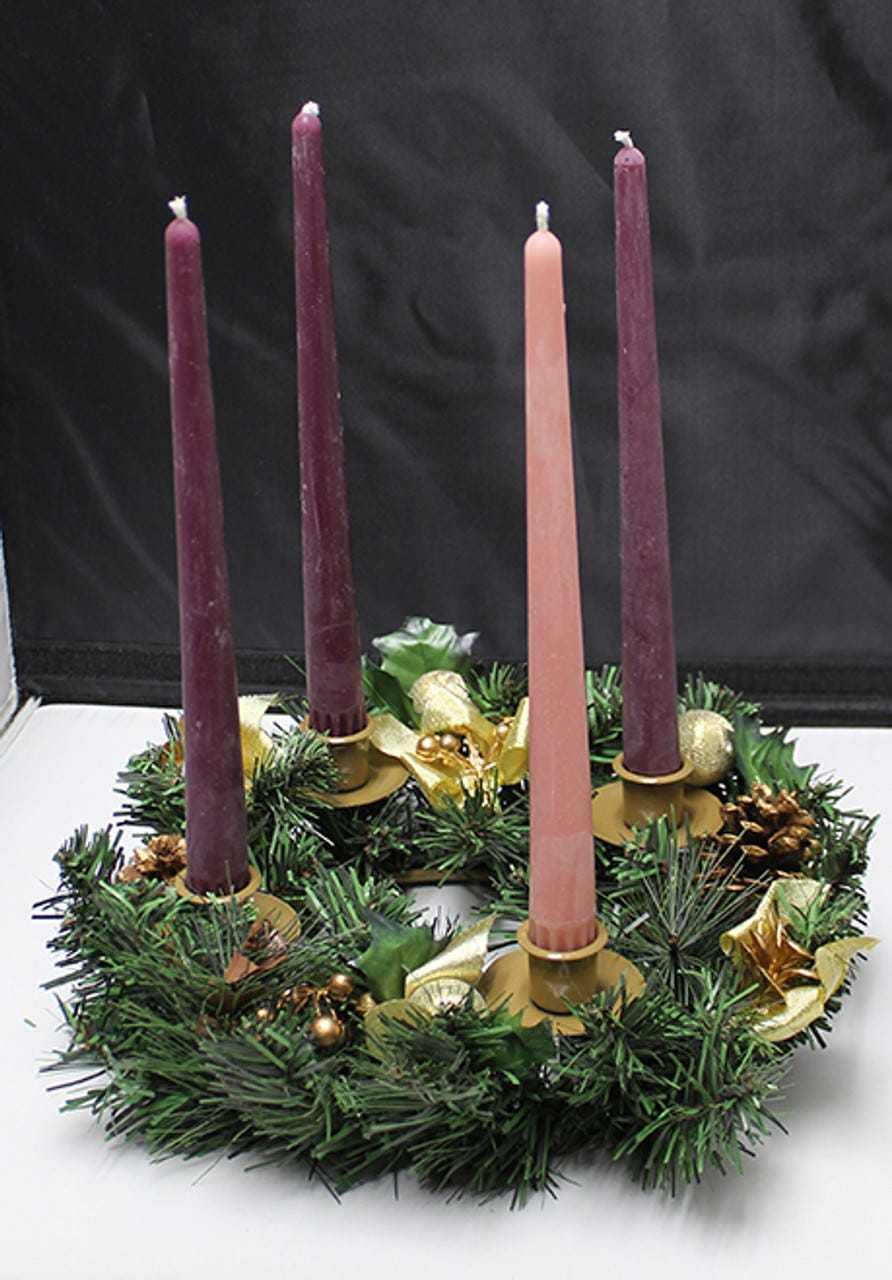Last Sunday marked the beginning of Advent, an important date in both the Christian & Pagan liturgical calendars. I’m particularly fond of the ancient Teutonic roots of the Advent wreath, involving removing a wheel from the wagon to display prominently in the house, to enforce a rest following the autumn harvest & tucking the fields away for the year. A bronze-age Martha Stewart apparently got it into her head to decorate the wheel with greens & dried berries, with candles to mark off the days until the return of light at the solstice.
One of the greens I most admire - both for appearance & scent - is that of Thuja occidentalis, the North American eastern white cedar, kakskus in Maliseet-Passamaquoddy, named Arbor vitae (tree of life) by Samuel de Champlain after it saved the lives of his remaining crew from scurvy in the “New France” colony established on Saint Croix Island (on the Maine/New Brunswick border, in the mouth of the Saint Croix River as it enters into Passamaquoddy Bay , known to the Passamaquoddy as Muttoneguis).
Champlain brought this back to Europe as an ornamental planting & a potential cure for scurvy (turns out a tea made from the greens & unripe cones is very rich in vitamin C, but limes were adopted first); Thuja later came to the attention of Hahnemann as a potential medicinal substance through a fascinating accident, detailed for us by Ernest Farrington:
Hahnemann received in his office on one occasion a patient who complained of some symptoms about the genital organs, which were, to say the least, suspicious. There was a thick purulent discharge from the urethra, with burning on urinating. There were also small pimples, attended with itching, about the glans penis, and some swelling of the parts. Hahnemann charged his patient with having contracted a venereal infection. This was stoutly denied by the patient, who, by the way, was a theological student. However, on the principle prevailing in every court to consider a man innocent until he has been proved guilty, Hahnemann determined to give the young man no medicine, and directed him to report in three days. At the end of that time he came back well. Hahnemann was puzzled. He questioned the patient closely, but found no cause. The young gentleman remembered, however, that as he sauntered through a garden a few days before, he picked some leaves of the arbor vitas and chewed them. This led Hahnemann to investigate the properties of Thuja.
A subsequent thorough Prüfung (“proving”) appears in Hahnemann’s Materia Medica Pura.
Hahnemann had previously challenged the prevailing dogma promoted by John Hunter that all venereal disease was an expression of Syphilis, describing “figwart disease“ (Sycosis) as an infection distinguishable from Syphilis, and recognized Thuja to be a central remedy in this disease which is currently recognized as condyloma accuminata, venereal wart disease, currently attributed to particular strains of human papilloma virus. Note considerable confusion in our literature confusing this with the disease now known as Gonorrhea; in Hahnemann’s day, the term “gonorrhea” referred non-specifically to any discharge from the genitals
(Greek gonos "seed" (see gonad) + rhoe "flow," from rhein "to flow");
The acute venereal disease we know today as “Gonorrhea,” described & attributed to infection by the bacterium Neisseria gonorrhea by Albert Neisser in 1879, was known in Hahnemann’s day (& still is, in contemporary German) as “Tripper” (the drip), mentioned as a distinct acute venereal infection alongside Syphilis & Sycosis in his 1789 monograph Instructions for surgeons respecting venereal diseases. Despite striking differences from fig-wart disease (Gonorrhea does not exhibit wart-like growths), this confusion persists in our literature & in contemporary homeopathic teaching.





